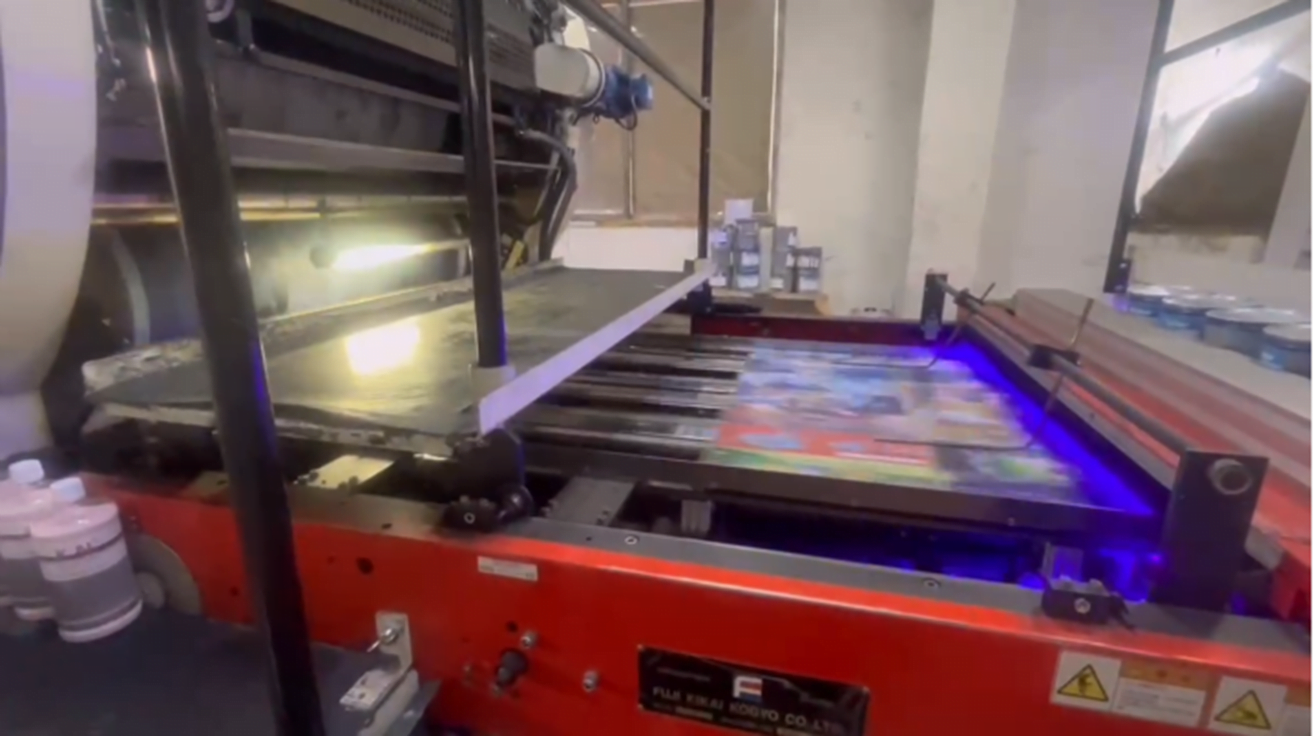Tinplate, after undergoing inner and outer coating processes, is ready for machine printing. Due to the smooth surface of tinplate, which does not absorb oil and possesses a certain hardness and thickness, the printing process typically involves offset printing. The printing principle is based on the immiscibility of oil and water, with selective adsorption of dot structures and colors. While the flatbed printing process on tinplate is similar to sheet-fed offset printing on paper, the unique characteristics of tinplate printing make it somewhat different. Here are several key aspects:
1.Printing Ink:
- Drying and Heat Resistance: The curing of printed ink on tinplate requires heating and drying. It is essential that the cured ink remains unchanged and does not yellow after heating. Colored ink should not fade, and gloss should be retained after applying varnish. Ink on tinplate generally cures at 150°C for 10-12 minutes. However, subsequent processes such as high-frequency resistance welding for varnish baking and the temperature for inner coating and full spraying may require temperatures of 180-220°C. Therefore, heat resistance of the ink becomes crucial.
- Solvent Resistance: Ink must resist dissolution in the varnish, which contains various solvents, to prevent color bleeding during varnishing.
- Boil Resistance: Containers for food packaging often undergo high-temperature sterilization. Thus, ink on tinplate must not bleed, fade, soften, or peel under the action of wet steam.
- Processability: Tinplate products often undergo processes such as drawing, punching, electrical folding, and sealing. The ink layer on the tinplate surface should have a strong structure, requiring the ink to have good adhesion, flexibility, surface hardness, and impact resistance.
- Light and Weather Resistance: Since various consumer goods are stored for a long time, ink on tinplate must resist color fading and aging due to light exposure and climate factors.
- No Heavy Metals in Ink Layer: For exported tinplate products like toy boxes, chess sets, battery casings, etc., the heavy metal content in the ink layer must meet the standards of the United States, the European Union, and other relevant regulations.
2.Varnishing:
- Completed tinplate prints undergo a layer of gloss varnish to enhance surface gloss and scratch resistance while adding a certain level of hardness. Varnish should possess:
- Good color retention, preventing ink bleeding or fading.
- Sufficient hardness and firmness to withstand post-processing deformation.
- Compatibility with white coating or primer without corroding them.
- Completed tinplate prints undergo a layer of gloss varnish to enhance surface gloss and scratch resistance while adding a certain level of hardness. Varnish should possess:
Common types of varnishes include epoxy resin, alkyd resin, acrylic resin, and acrylic amine, each with different compositions, properties, and applications. Selection depends on factors such as deep drawing deformation in subsequent processes, localized high-temperature heating for welding, and the need for high-pressure boiling.
3.Drying Process and Requirements:
- Drying of the oil film on tinplate during production is a complex physicochemical reaction. Controlling the drying speed of the ink is crucial to ensure efficient printing and product quality.
- Rapid drying can reduce the normal transfer performance of the ink, affecting normal production. It may result in unclear prints, faded colors, and the appearance of dried ink on the printing plate and ink roller surfaces, hindering ink transfer.
- Excessive drying time can cause difficulties in overprinting, adhesion issues, reduced firmness, and susceptibility to scratches during transportation.
 The drying process depends on three factors: the temperature set in the oven, the time the temperature peak is maintained, and the temperature curve of the drying room. The drying room typically consists of three parts: a heating zone, a constant temperature zone, and a cooling zone. The heating zone raises the temperature of the tinplate from room temperature to the set temperature, the constant temperature zone maintains the temperature reached in the heating zone, and the cooling zone ensures thorough cooling of the dried tinplate. Proper temperature control is crucial for preventing under-drying or over-drying, ensuring optimal ink and varnish performance.
The drying process depends on three factors: the temperature set in the oven, the time the temperature peak is maintained, and the temperature curve of the drying room. The drying room typically consists of three parts: a heating zone, a constant temperature zone, and a cooling zone. The heating zone raises the temperature of the tinplate from room temperature to the set temperature, the constant temperature zone maintains the temperature reached in the heating zone, and the cooling zone ensures thorough cooling of the dried tinplate. Proper temperature control is crucial for preventing under-drying or over-drying, ensuring optimal ink and varnish performance.
In summary, the printing process on tinplate involves careful consideration of ink properties, varnishing for protection and enhancement, and precise control of the drying process to ensure high-quality and durable printed products.


Write a Comment